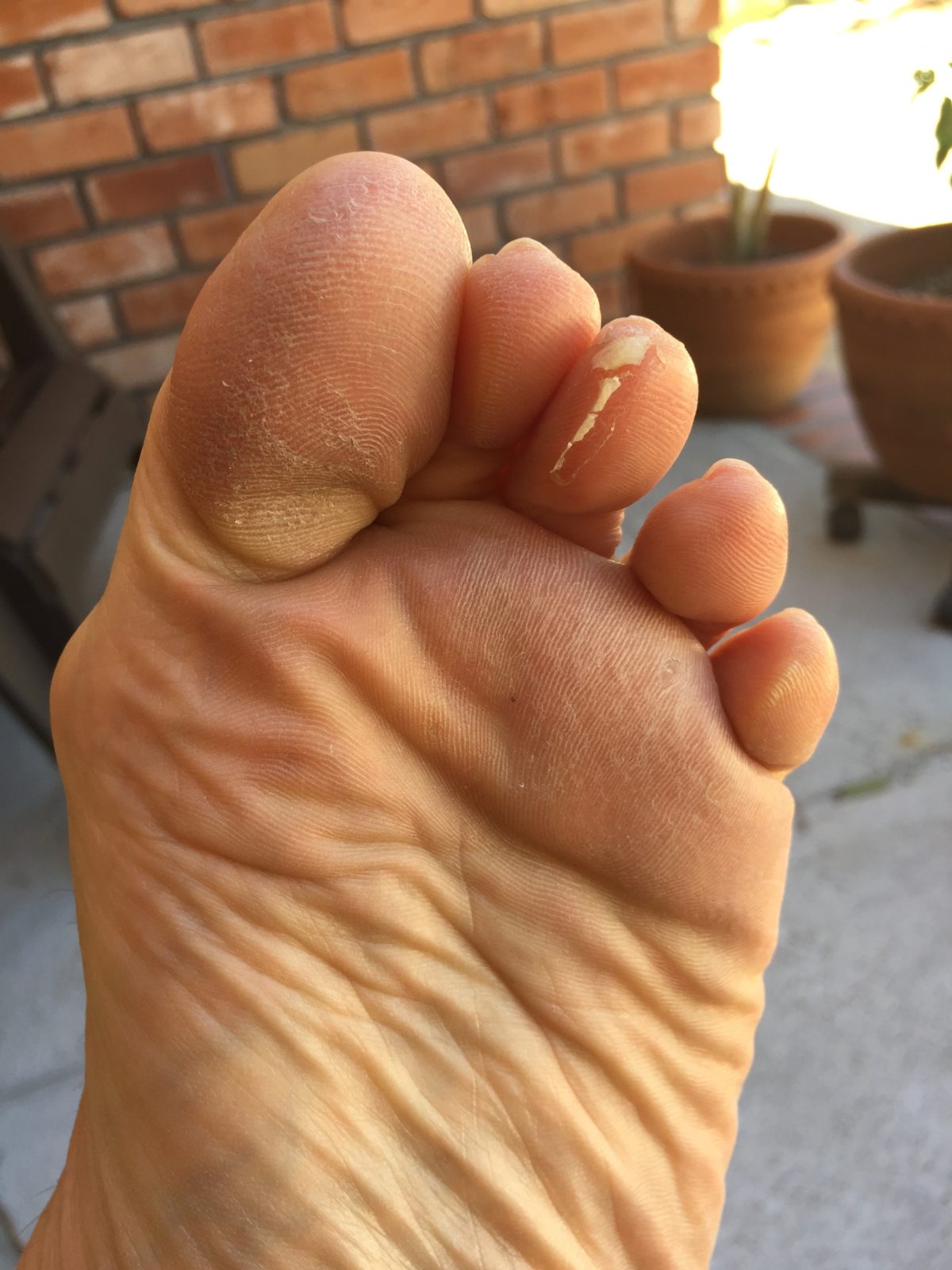One of the first shocking things I learned as a beginning gymnast was that:
- I was going to get a lot of blisters on my hands;
- They were going to HURT; and
- I needed to learn how to take care of them so they wouldn’t be a problem—for my health or my gymnastics participation.
At the beginning—
My eight-year-old hands were tender, unused to the friction and shear forces I was going to expect them to handle for the next fourteen years of my life. Like it or not, they would come with my sport.
So after the first two or three episodes of having areas on the palms of my hands heat up, get fiery red, hot and swollen, before having the skin peeled off, I had to learn to care for my hands.
Coach would laugh when we told him we “had a rip.” As an ex-military guy, it was all in line with toughening up, and he thought it was funny. “Just chalk up and get back up on those bars!” A palm-full of thick calluses was to be my fate, and the fate of every other gymnast I knew.
That was back in the days when female gymnasts didn’t wear the grips they do now. Guys did; girls suffered. They were cumbersome and difficult to use on our oval-shaped bars; and they were also difficult to use if you had stubby fingers like I do—not enough finger sticking out beyond the grips to grad hold. And they didn’t really make them in girls’ sizes. Surprise.
What is a blister, really?
And what causes it?
I learned more than I wanted to know about the physics of blisters. I learned a lot more when I studied and practiced athletic training. Here are some blister-forming facts:
- Blisters can be caused by friction, when a tissue encounters friction when it’s rubbed over or against another surface. Like the up-down motion of your heel against the back of your shoe when you’re wearing thin socks, or no socks at all. Rub, rub, rub. Blister.
- Deeper blisters are most often the result of shear forces, when the layers of skin are rubbing back and forth on one another.
- When the epidermal layer of skin is irritated or damaged by these forces, fluid collects between the epidermis—top layer—and the deeper dermal layer. The fluid usually comes from plasma escaped from the surrounding damaged cells.
- The fluid seeps into the pocket and puffs up the top layer of skin.
- The fluid is there to bathe the damaged skin layers, protect it, and start the healing process.
- Shear force blisters can cause tremendous pain because it causes damage or irritation to surrounding nerves.
- Blisters can form under calluses. (These types of blisters can be hard to manage and require careful treatment.)
- Having thickened calluses that aren’t managed (like carefully shaving down or kept soft or pliable) can increase your risk of deep blisters, and a lot of pain!
- Sweat and warmth—as what happens when your sweaty feet are stuck in a shoe—increase blister formation likelihood.
- Blisters can be filled with a variety of fluids, like serum, plasma, blood or pus (indicating a probable infection).
- The crushing or pinching of tissue (like I experienced a lot of as a gymnast, when I was swinging around on the bars) can rupture a blood vessel in the dermal layer, which in turn allows blood to seep into the pocket between the layers. There were times we’d leave blood streaks (or skin sections) on the bars when we had a rip.
- The body quickly springs into action when a blister forms.
- At six hours post-blister formation, the blister fluid is usually re-absorbed, and the top layer flattens back down onto the underlying tissue and begins to die. But it serves as a protective cover for the wound beneath it.
- At 24 hours, new skin layers are already beginning to form.
- And at 48 hours, new “soft” baby skin can be seen developing over the wound. If the blister is not properly cared for, this new skin can crack and another wound (now exposed) can appear. Then you can have a blister forming underneath a blister, a very painful condition.
- Blisters improperly cared for can lead to infections and slowed healing.
- How hydrated you are affects blister formation, and how well it heals. Really.
*On the photo above, you can see the cracked, peeling skin of the blisters that ran along my middle toe. I didn’t do anything to treat those. The body took care of everything, and the old skin is now peeling away. While noticeable, these blisters (which occur in the same spot on both my feet), were not noticeable enough to slow me down, or warrant padding or bandaging. But if I were to go on longer hikes during the day, day-after-day, I would make sure I taped the toes to reduce friction and shear forces. Clearly I am prone to irritation in these areas, probably due to the biomechanics of how my foot hits the ground and pushes off.
NEXT WEEK: Learn how to provide immediate care for your blisters.
Until then, keep those feet dry and as cool as possible! (I know. Difficult on a long walk or hike.) And don’t peel the skin from those blisters!
Blessings,
Andrea
May you prosper in all things and be in health, just as your soul prospers (3 John 2).
Photo by Andrea A Owan
